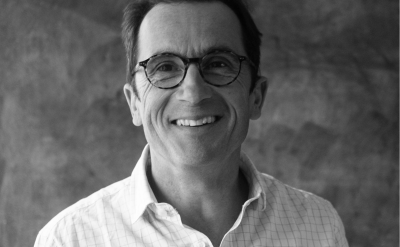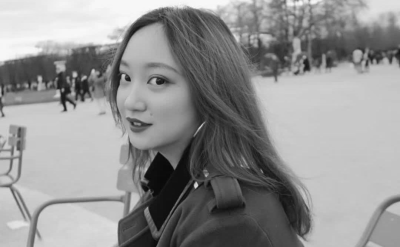News

Jean-Christophe Lamy, SK 1988 – Pilot of his own life.
Despite his nearsightedness, Jean-Christophe Lamy (PGE 1988) never gave up on his childhood dream to become an airline pilot. This freedom lover has, by his own admission, had an unusual career path, having done things “back to front”, overcoming one hurdle after another to fulfil his dream of flying. He now lives in Canada, where he works for Sunwing as a pilot-in-command on Boeing 737 aircraft.
Was becoming a pilot a childhood dream?
For as long as I can remember, anything I undertook had some connection to planes (drawings, model making, model aircraft making, visits to airports). But around age 12 I started to lose some visual acuity. Over time, my nearsightedness became bad enough to prevent me from becoming an airline pilot. It was a huge disappointment. But I quickly found a way to bounce back: I would become a private pilot and, why not, have my own plane! To me, aviation was like an ultimate form of freedom; a way to escape the constraints of earth dwellers. The only way to make it happen would be to make enough money to realise this somewhat crazy dream.
Which is why you studied business?
Yes, it seemed the best way to achieve my goal, even though it was a choice I was making by default. I signed up for a technical diploma in marketing techniques. That’s where I understood that irrespective of your profession, if you excel at it you can find pleasure in it. I also discovered that I had some skill in the areas of innovation, project management and team management. And finally it also occurred to me that life is a bit like clay: with some will and determination and by getting your hands dirty, it is possible to shape it the way you want. That was a big revelation. I told myself that from then on the future was in my own hands and nothing would stop me.
So I continued my studies at the University of Nice, and then at SKEMA Business School where I was admitted based on the academic qualifications I’d already acquired. After one year, I headed for the United States as an exchange student, to follow the MBA programme at Arizona State University in Phoenix.
What did you gain from this first significant experience abroad?
The United States… a fascinating country where anything is possible. The best and the worst. I quickly understood that that society’s values weren’t right for me. I did, however, draw inspiration from the positive and constructive attitude that is pervasive in the business world over there.
That said, I already knew that I would build my career abroad. Before leaving for Phoenix I was working a summer job through which, quite by chance, I got to meet the head of the European division of the Peter Stuyvesant group. We hit it off. And with a simple handshake I was guaranteed a position working with him when I got back from Arizona. It’s huge to have such trust placed in you at such a young age. It gives you a real boost and it’s gratifying.
So you started your working life in Amsterdam working for Rothmans?
Yes, I was put in charge of the events organised by the brand, which at the time had a very strong image, a bit like Red Bull today. I had to find ways to promote cigarettes to young people, without it being too obvious. I organised promotions in nightclubs, on the beach, at ski resorts, Formula 1 circuits, car rallies, fashion shows… events that attracted a lot of attention. I had a dream life. But I’ve never smoked and I’m a bit of an idealist. I couldn’t live with this dilemma. I left after a year and a half despite the future that was fully mapped out for me in that company.
I was 25 at the time and I immediately found a job in Paris as marketing director for an engineering firm that designed and set up television and radio studios. One of the responsibilities entrusted to me was the internationalisation of their operations. It was an extraordinary personal and professional experience. There again it was a matter of the company’s CEO trusting me. To increase our chances of success abroad, I advised them to change the company’s name and visual identity. AVS (Audio Visuel Systèmes) became AAVS (Advanced Audio Visual Systems). Neat trick: with the double A we could be certain of appearing at the head of all business lists! Then I spent the next years of my life in planes, but still not behind the wheel (laughs)!
You hadn’t lost sight of your objective?
On the contrary, that well-paid position enabled me to save for future flying lessons. Then I heard about a technique for myopia correction that was developed well before laser treatment and performed with great skill in the USSR: radial keratotomy. It involved an eye surgeon making incisions in the cornea by hand. After checking that this procedure wouldn’t compromise my chances of becoming a pilot, I was the first patient to have the operation in France. Of course anaesthesia was not possible. The operation and the recovery were painful. But the events that followed would prove that it had been worth it.
As soon as I’d healed, I passed the medical exam to become a private pilot. I was so motivated that I took some time off and got my licence in three weeks! I was finally a pilot at 27, after 15 years spent pursuing the dream. My first flight was between Paris and the French Riviera, after convincing the president of the flying club that I was capable of flying over such a long distance just one day after my final exam. It was fabulous. What an incredible experience it was to land at Cannes - Mandelieu Airport where my parents were waiting for me!
I enjoyed it so much that I decided a life change was in order.
I then became a contract worker at Monnaie de Paris (the French Mint), which was a wonderful experience working in that grand and lavish setting. The work hours at that job were more compatible with my desire to fly. On weekends I was now free to pursue my ultimate goal of becoming an airline pilot. But that wasn’t going to happen in France, because radial keratotomy was still incompatible with that profession over there.
And that’s when you had the idea of coming to Canada?
I looked into all possible options. Canada fit all the criteria that were most important to me. I went to spend five weeks there in 1995 to get my professional pilot licence. With this frankly unhoped for achievement under my belt, I returned there in 1996. In the space of three weeks I got my instrument, twin-engine and floatplane ratings… There again getting all of those in such a short time frame was a tremendous feat.
I was really ready to start a new life for good… the one I’d hoped for for so long. I applied for a permanent residency visa. It took 8 months to get all the right documents.
Then in May 1997, I arrived in Canada with two big suitcases.
Did you have any leads on the work front?
None. As soon as I arrived I sent out 250 résumés to all the airlines. I got zero replies! I was lacking experience. My plan B was to work in aviation, not necessarily as a pilot but at least as an instructor. I lucked out there too.
Fortunately, my CV got into the hands of someone at Bombardier (the world’s third largest aircraft manufacturer) via the French Chamber of Commerce in Quebec. I joined the marketing department and after one year of internal networking, I became a test pilot…
At the time, the Dash 8-400, a regional airliner, was being developed. For this programme, the Chief Test Pilot had decided to train some young pilots himself. And I was one of the lucky few! It was incredible to find myself in a position which you can’t normally hope to access in France unless you have a solid military or scientific background. I couldn’t have imagined that I’d be flying these prototypes. And yet I was sent to Wichita (Kansas), an historic and strategic location for the aerospace industry where the flight testing centres of most aircraft manufacturers are located. I was now flying with some real mavens such as ex fighter pilots from the US Navy and even a former space shuttle commander. I was their co-pilot. They took me under their wing, trusted me; I learned a great deal from them. It was an absolutely fantastic experience.
Then 9-11 happened. The aviation market collapsed. Bombardier let a lot of employees go. In this context I still managed to get in at Air Canada as a ground flight instructor.
But a little later on you took the risk of joining Sunwing. Why?
I heard about a small airline that was starting out in Toronto. I was satisfied with my job as an instructor at Air Canada, but I still wasn’t an airline pilot. So after giving it some thought, I decided to approach Sunwing which, at the time, only operated a single aircraft. After a successful job interview in September 2007, I finally became an airline pilot! At nearly 40!! Today, I’m nearing 10,000 flight hours and there are 44 aircraft in the Sunwing fleet.
More than 10 years later, does the reality live up to your dreams?
For a very long time there was the challenge, the adventure, the impetus I gave to my life to accomplish my goal. I left my home country, my language, my friends and my culture for that. I was pursuing a dream and, paradoxically, it took control of my life. Being an airline pilot means following procedures and complying with regulations at all levels. Naively, I had overlooked that. I had a more romantic and idealistic vision of this profession. It’s a wonderful job, but it’s also very restrictive (working hours and holidays out of sync with everyone else, for example). Every second day you’re up at 3 in the morning; your circadian rhythm is completely disrupted for days. You have to be in good physical condition. It requires constant discipline. Every 6 months we risk our licence in the simulator. We’re constantly tested, examined. And at the end of the day, the personal freedom is rather limited. Despite all that, I love this constant challenge.
In the 3rd phase of my life, I think I might use this experience to finally spread my own wings. Perhaps work for NGOs and fly planes for humanitarian operations.
Are you happy living in Canada?
Yes, over here I have recreated a new life that makes me happy. In Canada, you find a very good balance of North America (youth, openness, dynamism, entrepreneurial spirit…) and Europe (values, culture).
I live in Toronto, where European roots are very present. But I feel free to stay or go elsewhere. I’ll go wherever the wind takes me.
In the end you became the person you always dreamed of becoming!
Spontaneity and innocence are what childhood is all about. A dream born in such fertile soil reflects the very essence of who we are. When we’re very young, we are not aware of the limitations life can impose and we disregard them completely. On that basis, at 30 years of age I invested everything in pursuing my childhood dream. I’ve never regretted it. If I’ve learned anything over these years, it’s that despite the sacrifices you mustn’t allow yourself to be formatted by your environment nor listen to all the pessimists out there. It is crucial to stay connected to your deep nature. And that’s when you become your true self.
Interview by Marie-Pierre Parlange (lepetitjournal.com) for SKEMA Alumni




